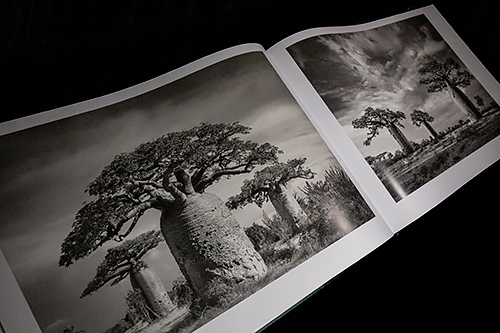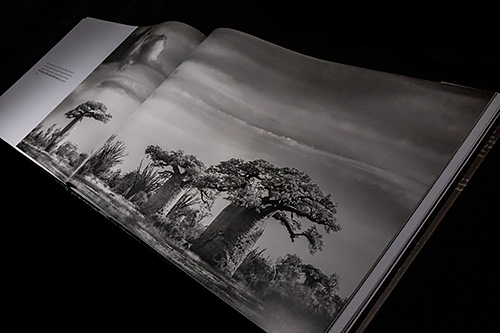Photo Corners headlinesarchivemikepasini.com
![]()
A S C R A P B O O K O F S O L U T I O N S F O R T H E P H O T O G R A P H E R
![]()
Enhancing the enjoyment of taking pictures with news that matters, features that entertain and images that delight. Published frequently.
Book Bag: Baobab



8 December 2021
The Baobab tree (pronounced bau'·bab) native to Africa looks like it's upside down with its roots wiggling in the sky instead of its branches. In fact, it's commonly called the Upside Down Tree. But the scientific name is Adansonia, after the 18th century French botanist Michel Adanson who first described the species, which can live 2,500 years.

We learned that from the excellent essay at the back of Beth Moon's Baobab by Adrian Patrut, a professor of inorganic and radiochemistry studying the trees. A handy thing to be, too, because radiocarbon analysis is the only way you can date a Baobab.
The main text, a diary of Moon's photo safari to document the demise of these majestic trees, is sprinkled with quotes from Rebecca Solnit and the poet Jane Hirshfield, making this photo book not only something to chew on but delicious too.
The demise of the Baobabs has been quite sudden, Moon learned. They are not surviving the drought and higher temperatures brought about by climate change. Between 2005 and 2017, Patrut writes, "nine of the thirteen oldest and five of the six largest African baobos either died entirely or lost their oldest and/or strongest stem(s)."

Moon had photographed them earlier and stayed in touch with her hosts who told her that some of her favorites had started to fall.
She took that personally. She got on a plane and flew back to Africa to document them, to save an image of them before they disappeared. She explains:
In the presence of old trees, I am reminded there is still grace and beauty in the world. By honoring the trees that remain, we celebrate the joy and splendor of the earth. Such thoughts lead me past grief into hopefulness.
Joy and splendor indeed. Moon's photos of the trees are luscious duotones but she also uses subdued color to document life in the villages she visits.
This is, like the trees themselves, a large book. Closed it is 15.4 x 10.3 inches. When you open it up, it expands to 31 inches wide. You'll need four knees or a big coffee table.

But, also like the Baobab, it is rich inside. In the case of the Boabab, the trunk holds water. So do Moon's images.
Here's Moon making one of them, which also shows a few of the photos from the book:
We've been reading this book for several weeks now and we plan to keep reading it for several more. But we wanted to get this review published before the holidays go by because, from our point of view, it's a gift. From Moon to all of us.
Astonishingly beautiful, it is tempered by the sadness accompanying the demise of these magnificent trees.
Baobab by Beth Moon, published by Abbeville Press, 128 pages, $49.95 (or $47.17 at amazon.com).